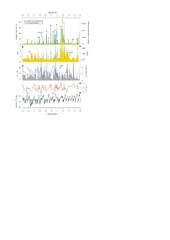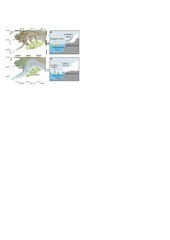| dc.contributor.author | Müller, Juliane | |
| dc.contributor.author | Romero, Oscar | |
| dc.contributor.author | Cowan, Ellen A. | |
| dc.contributor.author | McClymont, Erin L. | |
| dc.contributor.author | Forwick, Matthias | |
| dc.contributor.author | Asahi, Hirofumi | |
| dc.contributor.author | März, Christian | |
| dc.contributor.author | Moy, Christopher M. | |
| dc.contributor.author | Suto, Itsuki | |
| dc.contributor.author | Mix, Alan | |
| dc.contributor.author | Stoner, Joseph | |
| dc.date.accessioned | 2019-01-16T08:52:31Z | |
| dc.date.available | 2019-01-16T08:52:31Z | |
| dc.date.issued | 2018-02-15 | |
| dc.description.abstract | Fertilization of the ocean by eolian dust and icebergs is an effective mechanism to enhance primary productivity. In particular, high-nutrient, low-chlorophyll (HNLC) areas where phytoplankton growth is critically iron-limited, such as the subarctic Pacific Ocean and the Southern Ocean, are proposed to respond to increases in bioavailable Fe supply with enhanced phytoplankton productivity and carbon export to the seafloor. While Fe-fertilization from dust is widely acknowledged to explain a higher export production during glacial periods in the Southern Ocean, paleoceanographic records supporting links between productivity and eolian dust and/or icebergs in the North Pacific are scarce. By combining independent proxies indicative of ice-sheet dynamics and ocean productivity from a single marine sedimentary record (Integrated Ocean Drilling Program [IODP] Site U1417), we present a comprehensive data set of phytoplankton response to different fertilization mechanisms in the subarctic northeast Pacific between 1.5 and 0.5 Ma, including the Mid Pleistocene Transition. Importantly, the timing of the fertilization events is more strongly controlled by local ice-sheet extent than by glacial-interglacial climate variability. Our findings indicate that fertilization by glacigenic debris results in productivity events in HNLC areas adjacent to ice sheets, and that this mechanism may represent an important, yet rarely considered, driver of phytoplankton growth. | en_US |
| dc.description.sponsorship | German Research Foundation
European Consortium
Helmholtz Association
The Natural Environment Research Council
Philip Leverhulme Prize
U.S. National Science Foundation
The U.S. Science Support Program of the IODP
Korea Polar Research Institute
The Korean Government
The Japan Agency for Marine-Earth Science and Technology
Japan Society for the Promotion of Science | en_US |
| dc.description | Accepted manuscript version. Published version available at <a href=https://doi.org/10.1130/G39904.1> https://doi.org/10.1130/G39904.1</a>. | en_US |
| dc.identifier.citation | Müller, J., Romero, O., Cowan, E.A., McClymont, E.L., Forwick, M., Asahi, H., ... Stoner, J. (2018). Cordilleran ice-sheet growth fueled primary productivity in the Gulf of Alaska, northeast Pacific Ocean. <i>Geology</i>, 46(4), 307-310. https://doi.org/10.1130/G39904.1 | en_US |
| dc.identifier.cristinID | FRIDAID 1624850 | |
| dc.identifier.doi | 10.1130/G39904.1 | |
| dc.identifier.issn | 0091-7613 | |
| dc.identifier.issn | 1943-2682 | |
| dc.identifier.uri | https://hdl.handle.net/10037/14455 | |
| dc.language.iso | eng | en_US |
| dc.publisher | Geological Society of America | en_US |
| dc.relation.journal | Geology | |
| dc.rights.accessRights | openAccess | en_US |
| dc.subject | VDP::Mathematics and natural science: 400::Geosciences: 450::Quaternary geology, glaciology: 465 | en_US |
| dc.subject | VDP::Matematikk og Naturvitenskap: 400::Geofag: 450::Kvartærgeologi, glasiologi: 465 | en_US |
| dc.title | Cordilleran ice-sheet growth fueled primary productivity in the Gulf of Alaska, northeast Pacific Ocean | en_US |
| dc.type | Journal article | en_US |
| dc.type | Tidsskriftartikkel | en_US |
| dc.type | Peer reviewed | en_US |


 English
English norsk
norsk

